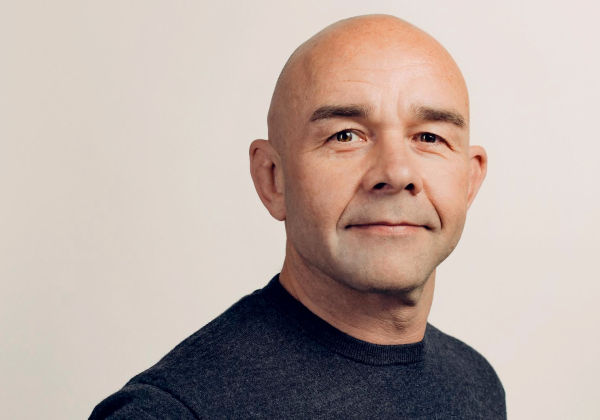Express Scripts Prescription for Change
Pharmacy benefit management (PBM) companies have been in the limelight of late—and not in a good way. During a press conference in May, U.S. President Donald Trump called out the organizations as one of the “middlemen” helping to drive up drug prices. His administration’s plan for lowering those prices says that hidden negotiation between drug manufacturers and PBM companies “likely decreases…health outcomes.” The headwinds facing these companies are more than just bluster from the White House. In May, the state of Connecticut passed a law forcing PBMs to disclose rebates they receive from drug companies. The idea is to reveal whether or not companies are passing along any savings to consumers.
Express Scripts has not been immune to PBM criticism. Regulators, lawmakers and drugmakers all have recently suggested that the $100 billion company and its competitors have contributed to the rapid rise of drug prices. Last year, Express Scripts’ biggest client, health insurer Anthem Inc., walked away, saying the company overcharged the insurer by several billion dollars. (Express Scripts denies Anthem’s charges, and a recent lawsuit filed by shareholders against Express Scripts has been dismissed.) Express Scripts’ shares had fallen significantly since its dispute with Anthem became public in January 2016. They’ve since buoyed thanks to the announcement in March that Express Scripts would merge with health insurance giant Cigna.
But even if that $67 billion deal closes as planned at the end of 2018, Express Scripts’ role in the health care delivery landscape will remain under threat. That is because new tech-savvy competitors—including Amazon, reportedly—soon could emerge to disrupt how pharmacies deliver drugs to patients. For Express Scripts, fending off new challengers will in large part come down to pulling off a transformation that will include a major tech overhaul Share on X and help to lower drug prices and boost operational efficiencies.
Leading the transformation process is Neal Sample, who joined the company in 2016 as CIO and was promoted to COO in January. He has learned that while appetite for change in the C-suite is “perhaps unlimited,” that does not mean major transformations can happen with the flip of a switch. “Executives want to push faster,” but on the frontlines, Mr. Sample says, people are “more likely to be overwhelmed by the amount and state of change rather than saying they want change to go faster. So you have to balance those differing expectations by making the right changes at the right time.”
Technology is fundamental to how Express Scripts provides value. For example, whenever a customer goes to a pharmacist with a scribbled prescription from a doctor, that prescription is entered into a computer and uploaded into a database managed by a company like Express Scripts. The prescription is then evaluated to make sure it is appropriate for a particular ailment and patient. If so, the pharmacist gets a green light to fill the prescription.
Express Scripts’ transformation is about implementing tech systems that make that process nearly instantaneous.
With improved tools to both expedite drug delivery to patients and analyze how those patients use the drugs, Express Scripts believes it can further drive down prescription drug costs and control its own operational costs. CEO Tim Wentworth has said that Mr. Sample’s leadership is helping Express Scripts transform “into a cutting-edge health care technology company.”
It has taken Express Scripts two years, starting with Mr. Sample’s arrival in 2016, to reach that cutting edge. The company has walked the path through deliberate planning and—more importantly—a well-defined strategy that was regularly updated and continually communicated to employees. Not everything went according to the plan, but Express Scripts believes its transformation has already made it a more agile company that better harnesses big data to navigate the very volatile pharmacy-benefits management industry.
“When your work affects people’s health,” Mr. Sample says, “you have very high stakes. So we created a future vision, and we returned to that vision as we went through the transformation.”
Fresh Eyes
When Mr. Sample arrived from American Express, where he was president of the enterprise growth unit, he found Express Scripts was using a mix of different legacy technology systems. Much of the company’s growth over the prior two decades had come through acquisitions of other firms. Each of the acquired firms had their own approach to technology, and Express Scripts had typically just cobbled different approaches together. The result? In 2016, Mr. Sample says, Express Scripts was working with 31 different computer development languages. That meant different applications, and different programmers, struggled to communicate with each other.
 To fix that and to boost the company’s overall effectiveness, Mr. Sample and his executive team spent six months studying what could be done to improve the company’s use of technology. “We looked at best practices even outside of health care,” he says. “We looked at players like Netflix and Amazon to find ways to judge how effective we were being.”
To fix that and to boost the company’s overall effectiveness, Mr. Sample and his executive team spent six months studying what could be done to improve the company’s use of technology. “We looked at best practices even outside of health care,” he says. “We looked at players like Netflix and Amazon to find ways to judge how effective we were being.”
The exploration process was aided by the fact that Mr. Sample did not have a health care background. Having built his career at eBay, American Express and Yahoo, his mindset during the transformation planning process was not held back by organizational norms or status quo thinking.
“If you are intellectually curious and willing to be vulnerable and express that you do not know something, a tremendous amount of opportunity opens up,” Mr. Sample told Forbes. “If you ask fairly naïve questions, sometimes you will get an answer that simply improves your knowledge base, but every once in a while you will get an answer that makes you ask, ‘Why do we do it this way?’ Then, you can push a little more and say, ‘Have we thought about alternatives?’ From there, you can start building analogies from previous experiences, share new perspectives, and create some interesting value.”
Initially his team had considered starting the transformation process by simply overhauling a few key elements of Express Scripts’ technology infrastructure. Instead, they decided to tackle “people, process and technology” all at once, says Mr. Sample, who oversees approximately 18,000 employees spread across Express Scripts’ IT, pharmacies, call centers and client services departments. The transformation calls for integrating the various legacy systems, creating new cloud-based applications and applications for mobile users, and building a team of in-house programmers and developers charged with continually innovating new ways of leveraging technology, whether through new applications or better mining of data. To get there, Mr. Sample’s team has hired 600 new programmers in the first year of the transformation and plans to hire an additional 400 programmers by 2019.
When your work affects people’s health, you have very high stakes. So we created a future vision, and we returned to that vision as we went through the transformation.”
—Neal Sample, COO, Express Scripts
Building Momentum
During the early months of the transformation, Mr. Sample and his team tried to build support for change by talking to people in the company who normally would not have a role in technology remakes. “We went not just to our client-facing folks but to human resources and finance and communications. We talked to them about their role in the transformation in the company,” he says. “The idea was to create a shared vision that would really take hold because it was about changing the things that we needed to change.”
Once a shared transformation vision was developed, Mr. Sample and his team went back to various departments to explain that vision. “We literally told people, ‘This is what remarkable transformation will look like,’” he says. “That really set the stage. We created a future vision, and we returned to that vision as we went through the transformation.
That’s one thing companies have to do in transformation: They have to start with the end in mind. Start with a clean sheet of paper. Put what good looks like down on that sheet, and then start iterating toward that objective.” Mr. Sample is speaking literally about that blank sheet of paper. At the transformation’s inception in 2016, the executive team sat down with a blank sheet and then wrote a press release. The release, dated 2018, announced a major technological overhaul the company had achieved. It was shared across the company’s entire workforce and has served as its North Star during the technological transformation, Mr. Sample says.
“If you’re interfacing with a client or speaking with a patient or writing some code, you can ask yourself the simple question: ‘Is what I’m doing leading us toward this vision, this goal?’” he says. “If you can answer a resounding ‘yes,’ then you’re confident what you’re doing is right.”
Mr. Sample and his executive team knew that such a large and complex transformation vision needed to be achieved through smaller steps and iterations. Aside from the practicality of this approach, it would help prove that the changes being made were worth the investment.
“People often think about technology refreshes as a one-time process rather than a continuous iteration toward a goal,” he says. “And because they have limited investment dollars, they just pick the easiest fixes for that process. That doesn’t necessarily lead you to better.”
As soon as Mr. Sample’s team had established that the transformation process was creating value, they leveraged that buy-in. They pushed for more substantial changes, such as building out a new software platform, which might have a longer payback period. Because the transformation’s value was apparent, the team did not encounter thorny decision rights issues or territorialism between departments.
“As long as we were coming in better, faster and cheaper, as long as we were demonstrating value with what we developed, there wasn’t really a need to come up with a governance board,” he says. “There was not pushback.”
“As long as we were coming in better, faster and cheaper, as long as we were demonstrating value with what we developed, there wasn’t really a need to come up with a governance board. There was not pushback.”
—Neal Sample
Data-Driven Change
Express Scripts’ technological transformation has enabled process improvements and data collection that have delivered productivity gains. Mr. Sample is not shy about describing these successes. But he also says that there were mistakes made along the way. Chief among them: Boosting speed.
“It might have been nice not to take six months to figure out what good looked like,” he says. “And not all our bets paid off. We’ve done some automation activities that didn’t have much of a payoff. We could have better sequenced when we retired old technologies for new ones.”
Still, Mr. Sample says these issues never threatened to derail the overall change initiative because Express Scripts’ executives never wavered in their support. “If there is agreement with the executive leadership team on what success looks like, and then there is transparency and reporting on that along the way, you’re set up for success,” Mr. Sample says.
Due to the transformation process, Express Scripts’ leadership now sees data as a critical to its future. New technologies that the company has developed allow it to help people better manage their prescriptions to ensure they take drugs when and how they are supposed to. That, he says, “leads to more positive medical outcomes, which ultimately will lower the cost of their care.”
 The company’s mobile applications—which are increasingly used by consumers to fill prescriptions—have also been dramatically altered. “Three years ago, the rating we got from consumers for our mobile, digital experience was 1.5 stars. Today we’re a 4.5-star-app,” he says.
The company’s mobile applications—which are increasingly used by consumers to fill prescriptions—have also been dramatically altered. “Three years ago, the rating we got from consumers for our mobile, digital experience was 1.5 stars. Today we’re a 4.5-star-app,” he says.
Express Scripts also is more nimble today with software updates than it had been before the transformation began. It used to update its software stack—its combined set of applications—a few times each quarter. Today, a full stack update is completed every couple of weeks. Some software is even updated daily. “We’ve been able to increase our responsiveness and our time to market and to identify business opportunities much more quickly,” Mr. Sample says. The transformation also has given Express Scripts multiple new tools to deliver prescription drugs to patients in new ways. Among them, the company recently launched a new website that offers lower cost drugs to the uninsured. Called InsideRx, the cloud-based site helps users search for the best price available for the drug they need, no matter who sells that drug. That kind of comparison-shopping was impossible at the consumer level until recently.
Mr. Sample says other applications for cloud-based software will let the company more quickly respond to market changes, or to change the market on its own by rapidly deploying new ways to manage drug sales. For instance, one new cloud-based app in development will help health care companies figure out the best way to deliver specialty medicines to patients. Among other things, the app can help companies calculate exactly how much dry ice they will need to get medicines that must be shipped while cold to patients.
Those kinds of data-intensive tools are driving health care at all levels today, from the drug companies that must get their products to the market, to the pharmacists who safely sell them to patients, to patients uploading their own health data to health care providers through wearable monitors. For Express Scripts, keeping on top of, and better understanding that stream of data is central to its future.
“We’ve been able to do some remarkable new things with big data,” Mr. Sample says. “We have increased our ability to positively impact drug adherence rates. We’ve been able to post industry-leading drug price controls. A lot of that has to do with how we utilize our technology and our data. This was our vision for remarkable transformation—and we’re realizing it today.”



